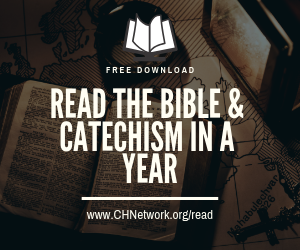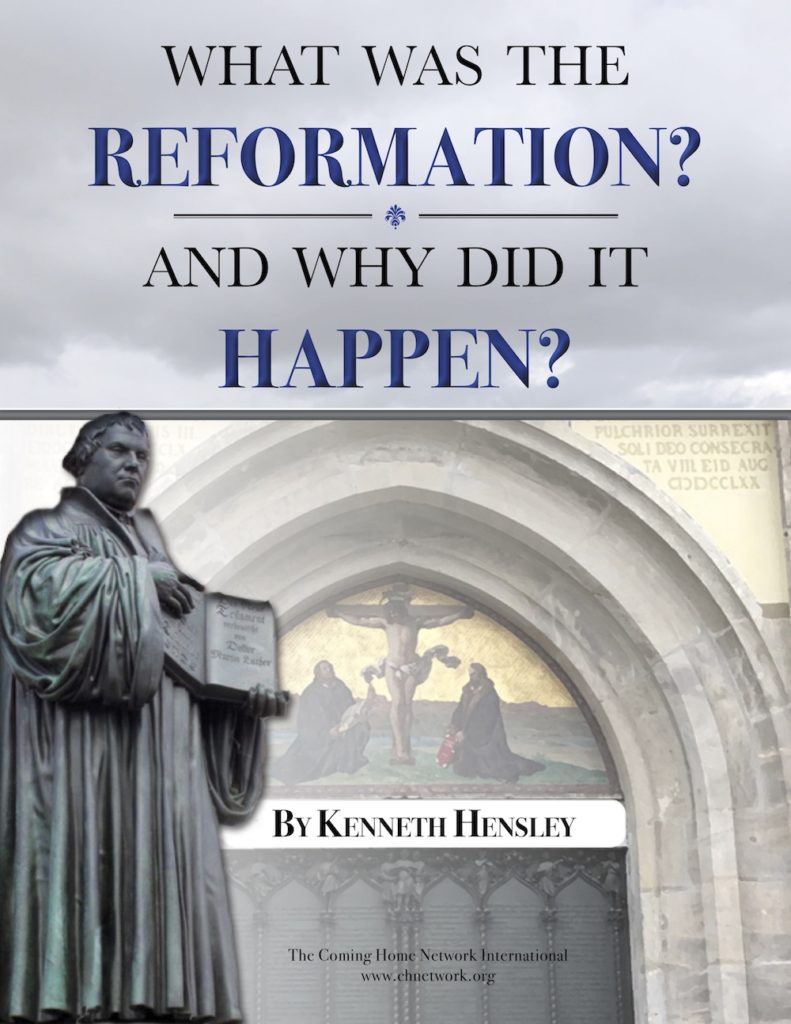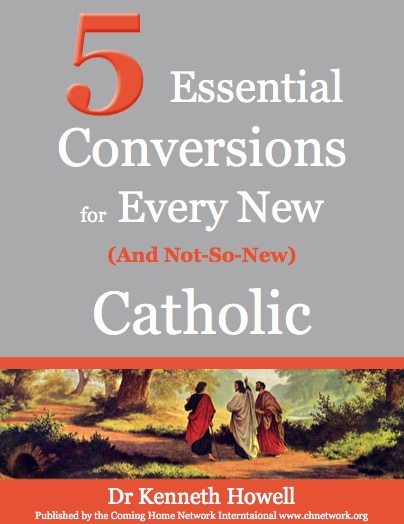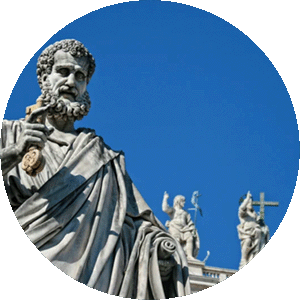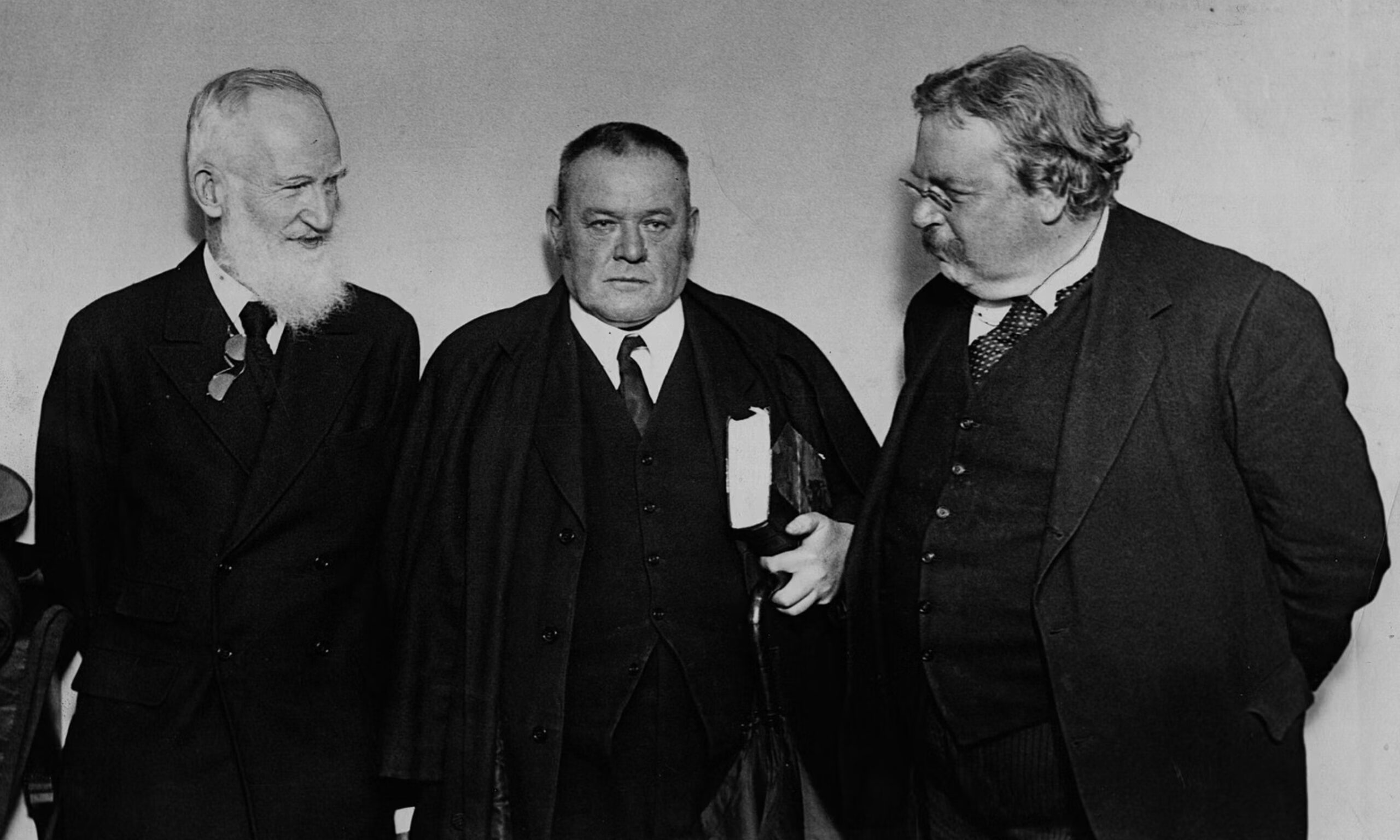
After playing guitar in front of a crowd of nearly 10,000 people during an Evangelical missions crusade in March of 2019 at the Palacio de los Deportes in the heart of Mexico City, it’s unfathomable that, almost exactly one year later, in March of 2020, a global pandemic and its resulting shutdown orders would act as the catalyst that would eventually lead my family and me to the fullness of the Christian faith in the Catholic Church.
You might consider us “COVID converts.” Looking back on all that led to us leaving our deep-rooted Pentecostal heritage for something we knew absolutely nothing about can only be described as a gift— an outpouring of grace during one of the most troubling and isolating years most of us will ever experience.
During the pandemic, people were scared and living in hopelessness; yet God was at work within our lives. In the middle of the chaos, we would decide to leave the familiarity of our religious heritages, our families, and our friends for the truth we had found in the Catholic Church. It all started with a corpulent early 20th century author from England and a wonderful literary society that wasn’t afraid to shine a light in the darkest of times.
Born Under the Pew
My wife Valiree and I were both “born under the pew” in the Assemblies of God, a charismatic Pentecostal denomination, in which our families have extremely deep roots. We both have aunts, uncles, cousins, and in-laws who are pastors and missionaries; grandparents and great-grand parents who were preachers and missionaries— with my great-grandfather being one of the first Pentecostal evangelists in Norway. Other family members serve as teachers, musicians and worship ministers, church board members and dedicated lay people. I even ended up marrying a pastor’s daughter! In other words, our families are deeply Christian and very Pentecostal.
Growing up, there were many things my family and the Assemblies of God taught me were important to the life of a Pentecostal Evangelical, always backed up by Scripture: the importance of Baptism (of the Holy Spirit and of water), worship, Scripture, prayer, being a part of a church community, serving in the church, and holy communion (though it was viewed as entirely symbolic). Our childhoods were profoundly Christ-centered and ministry- centered, and our relationship with Jesus and dedication to church shaped absolutely everything we did. I thank God often for the blessing of growing up in such a religious, Bible- based, and Spirit-filled heritage.
It was never a matter of if you would use your spiritual talents and gifts for the church and evangelization, but how and where. Being of a strongly musical family (many of whom could sing every song in the hymnal by heart), and like so many others my age who cut their teeth during the star- studded wonderment that was 90’s Christian Contemporary Music, serving in worship ministry has always been a part of me. I loved it. I felt, and still feel, that God blessed me with that particular gift of service. To live out Psalm 95, playing guitar and singing at every opportunity, was my ministry and calling. Not only did it bring me closer to God through worship, but it also led me to my wife. Valiree and I met on the church stage (she plays piano), and we served together in Las Vegas, Nevada, as worship and youth leaders for many years as part of her father’s pastorate in my childhood church.
Fragmented
A few years into our marriage, Valiree and I left her father’s church in search of our own ministry opportunities. We spent time in many different churches and even other charismatic denominations outside of the Assemblies of God in worship ministry, serving in leadership roles across Las Vegas during our first 15 years of marriage. Being in a town that’s obsessed with showmanship, we were part of a very hip, modern worship scene with rocking music and first-class musicians. We would serve where we were needed, from youth ministries to conferences, new church plants, and Bible study groups. We were raised and wired to serve wherever and whenever we could.
Between 2006 and 2017, we served in seven different churches, all in the same city, all with different interpretations of how to “do church.” The idea that something was wrong with this model started to penetrate me. I witnessed firsthand the type of division that seemed so deeply rooted in the Protestant culture: church splits and dissension over styles of music, styles of preaching, or even styles of management. If you didn’t agree with something, you would simply leave for another church or start your own.
In 2018, we started attending a non-denominational church, refreshed by the verse-by-verse Bible preaching and the focus on the cross, salvation, and winning souls for Christ, which seemed a positive departure from what we had experienced previously. It certainly checked all the boxes for us, and we saw many opportunities for growth and use of our musical talents and leadership from spending all those years in worship ministry.
It didn’t take long, though, for the same issues that plagued other churches in the Las Vegas valley to make their way there as well. Things modernized, got louder, bigger, and “better,” like so many other “seeker friendly” churches. The cross, normally located behind us on stage, was eventually taken down and replaced with black painted walls and new lighting—an attempt at making sure the experience was flashy, but not too offensive to “seekers,” as many Christian symbols can be.
Unsettled by this, 2018 brought about much prayer and personal study to help fill in some of the gaps. We took matters into our own hands, and my wife started homeschooling both our kids more intensively, with a purposeful Christ-centered focus. I remember, during this time, having a distinct longing to study how historical Christianity would view some of these big questions we had about ministry, the church, and our roles in spreading and sharing the love of Jesus through the modern worship experience. What was Christianity even like before the electric guitar?
An Englishman In Las Vegas
Whenever these questions of Christian identity crept into my mind, I would revisit a core group of authors who always had a positive impact on me, from modern influences like John Eldridge and Francis Chan, to spiritual giants like C.S. Lewis, Francis Schaeffer, and my personal favorite, G.K. Chesterton. I discovered Chesterton when I was just starting out as a freshman majoring in English at the local university in Las Vegas, while flipping through an English 101 book and landing on a short poem called The Donkey. I started looking into who this Chesterton fellow was and discovered that C. S. Lewis was tremendously influenced by him. I was hooked, and I began searching for more Chesterton wherever I could find him. Whenever I felt numb to the modern church experience and needed intellectual reasoning behind my core beliefs as a Christian, I would visit Chesterton to see what he had to say about things. In fact, the first book I gifted my wife before we were even engaged was a copy of Chesterton’s Orthodoxy. “Read this,” I said, “it’s the best book on Christianity I’ve ever read.” God bless her, she did read it. It wasn’t until much later that I would realize the role Orthodoxy played in our lives, or the blessing of having a wife so open to her husband’s bouts of zealously sharing what he’d recently discovered about our Christian faith.
Being quite the proud and bookish English major, I followed the American Chesterton Society, regularly visiting the Society’s website over the years. But it was during these challenging times at church I would fondly remember all those late nights I had spent in college, watching a show called The Apostle of Common Sense on a cable TV channel I’d randomly stumbled upon. It was during these years that I found myself longing for those expositions that Dale Ahlquist gave of Chesterton’s common-sense Christianity. There had to be something more to the way we “did church.” My curiosity about how Chesterton saw the world finally got the better of me, and I became a card-carrying member of the Society in March of 2019, receiving my first Gilbert! Magazine and starting to follow the group more intently on social media.
Setting The Stage
2019 was also significant for my ministerial career as a guitar player and worship leader. Not only did I have opportunities to play various conferences and concerts and help in recording original worship songs, but in March of 2019, I was able to travel with the worship team to Mexico City for a large outreach event featuring some big names in the Christian music industr y. I was humbled by the opportunity to minister at such a large event and genuinely moved as thousands of people came down to the stage to ask Jesus to be their Lord and Savior, while thousands of Bibles were passed out to new believers during the altar call. This was what we in worship ministry lived for—a chance to impact people through praise and worship music. Yet something gnawed at my heart as I watched the outreach service end and all those people made their way out of the stadium and back to their homes, never to be seen by us again. Was this all just a flash in the pan? Where will those people go to church tomorrow?
What Am I Protesting?
That same month, the Chesterton Society started posting a Chesterton Academy school trip to Rome on Instagram, asking for prayers to be prayed by all the students who were there in Rome visiting some of the most ancient and sacred places of our Christian faith. The thought of this was difficult for me to grasp. People I didn’t even know, praying for me? No secret handshakes? No “if you’re Catholic, we will pray”? No “us vs. them,” but unity—real Christian unity—something I had never felt before in my hyper-localized, competitive turf-wars church reality. I remember responding with a simple request for prayer, and just knowing that members of the Society were praying halfway around the globe for me was unbearably humbling.
If being a charismatic Evangelical taught us anything, it’s how we got it right, and how lost Catholics are, living in the shadows of empty cathedrals now serving as museums. Yet here was a very alive, very Catholic group of young people extending their hand in prayer and fellowship while meeting with other energetic, Christ-filled Catholics in Rome (how many of them are there?!), surrounded by unimaginably beautiful art and historic places. For the first time ever, I felt a real connection to those places as a Christian. Also for the first time, I asked myself, “If I am a Protestant, then what, exactly, am I protesting?” This was the same Jesus that we followed, right? As a Christian, isn’t this part of my history? In those moments, Christendom became real and universal and big—but somehow closer than ever before, and suddenly, everywhere.
Throughout the rest of 2019, I surveyed the Catholic Church, but from a distance. I would research Catholic vs. Protestant, finding as many documentaries as I could about Church history or the Reformation and looking up Christian apologists I admired for their take on Catholicism. I searched with the hope of them possibly talking me off this dangerous ledge, this secret little hobby of mine of being a member of the Chesterton Society, which I now realized happened to be very Catholic—and me suddenly ready to defend their being Catholic. The gap between how we “did church” versus what I was discovering about how Catholics lived the faith continued to grow, and I started questioning more and more why we believed what we did as Protestants.
The Show Must Go On
Then, like a crash of frying pans, a global pandemic hit in March of 2020. Everything screeched to a halt, including our normal worship and music routine. During the chaos of the shutdown, I was called upon quite often from various contacts to help fill in with playing guitar and singing while churches scrambled, deciding who was more at risk or what services would be kept and which would go fully online. Streaming and production quality were now of utmost importance. We had a show to do, after all.
Around that time, the Chesterton Society sent out an update, saying they were going to start streaming the Mass on their YouTube channel from a local parish in Minnesota, as all in-person gatherings were prohibited across the country. Intrigued, I tuned in to watch one day, and what I saw changed my life.
No studio-quality sound, no multi-camera shots and production lighting. It looked like someone was holding up a phone, and live-streaming the event. I had never even seen a Mass before, but it was most beautiful thing I’d ever seen. The reverence and care taken, especially while preparing Communion, the beauty of what was unfolding, is hard to put into words even now. I just remember tears falling down my face, wondering what I had witnessed. Was that what actually happened at a Mass?
Suddenly, attending church became important. Being there became important. I wanted to be there! The preaching (I didn’t even know it was called a homily) cut through me because of its absolute hopefulness. I immediately rewatched the whole thing with my wife Valiree, saying, “You need to watch this.” Her reaction was the same as mine: tears filled her eyes.
We couldn’t get enough. Ever y opportunity we had and ever y posting on the Chesterton YouTube channel, we watched—Daily Mass, choir concerts, Easter Vigil, everything. One morning, I remember watching Mass early, and my son, then 5 years old, came down and started watching it with me. He asked why there was a cross, and why Jesus was on it. It broke my heart! We had a wonderful moment talking through the meaning of the sacrifice made for us on the cross. If anyone needs an example of why having a crucifix in church is important, this is it.
What Did We Just See?
Feeling somewhat overwhelmed and surprised at the reaction we had to everything we were seeing, I did what any responsible Protestant would do: I immediately purchased a copy of the Reformed theologian R.C. Sproul’s Are We Together?: A Protestant Analyzes Roman Catholicism. There must have been something I was missing, something that would show me why we weren’t all Catholics, and I was looking to Sproul to help identify it. This project did not have the desired effect. I would read passages from that book out loud to Valiree and ask her, “Do you agree with that?” “Of course I do,” would mostly be her response, to which I would emphatically say, “That’s Catholic!” It seemed like almost everything we learned through reading our Bibles and growing up in the Assemblies of God was in line with what I was reading about Catholicism.
We researched as a family and continued to watch Mass online. While I continued to lead worship and play guitar at our church every Sunday, something didn’t seem right anymore. Something had changed, and it scared me to death.
I Can’t Be a Catholic!
Still skeptical, I thought maybe there was something in the Catholic Catechism that would be my “Gotcha!” moment to dispel these beliefs. What a mistake that was! Not only was I agreeing with Catholicism as outlined in the Catechism, I found myself mentally defending their beliefs when I compared it with things I would hear or read regarding things like the “whore of Babylon” or a lack of a “personal relationship” with Jesus. I knew it wasn’t true, because I was actually reading what Catholics believe. I also knew what I had read in the Bible, and those two things lined up!
As I continued to research, enthusiastically sharing everything I was learning with my wife, I kept thinking over and over, “But we can’t be Catholic.” Who has ever heard of such a thing—Pentecostal, spirit-filled believers leaving the religion of their family and giving up all they’ve ever known? I remembered Chesterton and The Apostle of Common Sense show I used to watch. What channel was it? Some religious one with a nun. Maybe I can get my fill of Catholic teaching on the side, tuning in occasionally to fill in some of the gaps I was feeling with our own church.
Then, after work one day, in the late spring of 2020, I tuned in to EWTN on satellite radio, just to see if the content was similar to that of the Chesterton show I used to watch. As if on cue, I joined in the middle of a program called The Journey Home. “Wait,” I thought, “Did they just mention they were former Protestants who converted to Catholicism?!” I wish now I could remember who it was that was being interviewed, but I was floored. These people do exist! Converts from Protestantism do exist! It became a normal dinnertime listen on Monday nights for months as my wife and I talked through, and related to, the interviews of others who had “crossed over the Tiber.”
We continued opening the door a little more. Over the summer, we would watch Mass as much as we could online, and like any good virtual parishioner, signed up for Catholic content providers like FORMED and others, using our “virtual parish” to sign up. All the kids wanted was to be part of it. They begged us to be baptized and to receive real Communion like they saw others doing during online Mass. They hungered for it, and I envied them. What was once the simplest and most forgotten part of my church experience had now become the one thing they wanted most at church.
I Will Be Catholic No Matter What!
It was then we realized that to be a Catholic was to be fully Christian. How could we not do this? We needed to do something about it. I tried to recall what that Catholic parish it was that we used to drive by when I was a kid, when we’d joke about all the Catholics trying to hurry to get to Mass, causing a traffic jam at the stop sign. We looked it up online, and I found the priest’s email address. If anything, the process of discovering Catholicism and becoming increasingly excited about finding this “pearl of great price” (Matthew 13:45–46) does make you bold—bold enough to knock on every door you can find.
During this time of COVID lockdowns in the fall of 2020, churches were just starting to open back up with extremely limited reservations-only style online ticketing, with temperature checks at the door. Though the website said it was restricting in-person attendance to current parishioners only, we didn’t care. We had to see a Catholic Mass in person, and I would register us as quickly as slots became available for that week so we would not miss out. I emailed the priests (all of them on the contact list; I didn’t know the differences or why there was more than one at this point), explained our situation a bit, and asked for a meeting.
What we heard back was not entirely encouraging: “Please call the office to schedule a meeting.” Upon calling, the main priest had availability a week or so later, so we put that on the calendar. In the meantime, we kept attending in person as much as possible, and we began observing all that was around us: why do they kneel? When do they kneel? Googling “What to do at your first Catholic Mass,” we mostly sat toward the back to not look too out of place.
When the time came for our first meeting with the priest, we shared our story…and he hesitated. He said, “I’ve heard of people like you, but I’ve never actually met one. Why would you want to be a Catholic now? Are you sure you want to do this? You’ll create absolute chaos in your family!” I responded quickly, “Because it’s the truth!” I’m sure my face said, “Duh!” Unfortunately, this was one of many encounters on our journey over the years with priests that didn’t quite know how to handle us or the situation we found ourselves in. We were somewhat demoralized, but this was counterbalanced by a wonderful RCIA (Rite of Christian Initiation for Adults) instructor who had heard about us and would sneak us into Mass whether we had a reservation or not. We wanted it so badly, and she knew it. She was more than happy to go out of her way for the four of us.
After a few months of RCIA and absorbing everything we could, Valiree and I were confirmed in the Catholic Church on Divine Mercy Sunday (the Sunday following Easter), April 11, 2021. My kids, eager to move past just receiving a blessing in the Communion line to fully receiving the Eucharist themselves, asked us both with excitement and wonder after we received our first Holy Communion, “What was it like?” “Home,” I said. It tasted like I’d come home.
Our kids finished up RCIC (Rite of Christian Initiation for Children) while Valiree and I both served in the RCIA class helping other converts learn about the Church. We also began volunteering in various other ministries at our parish, helping out wherever we could. Then, on Easter Vigil in 2022, my son and daughter were both baptized, confirmed, and received their first Holy Communion, something they both were anxiously awaiting.
His Ways Are Higher
For many, the pandemic brought out the worst in people. But even years before, something much darker was making its way through charismatic Protestant circles. Genuine men and women of God were starting to turn their backs on their faith in large numbers as praise and worship artists, Christian authors, and popular pastors we grew up with and learned Christianity from in the 90s were suddenly renouncing their faith. This startling trend was made worse by the church shutdowns of 2020, and sadly, to this day I still hear of those I served with who haven’t returned since, their disenchantment with religion reaching a boiling point.
Yet here we were, somehow able to find the deeper truth instead of abandoning it. It has been incredible to reflect on the people and the connections God has sent us along this journey, and how everything unfolded over the last few years. There were challenges, and I had my apprehensions, wondering to myself many times, “How could this be?” But here we were.
During our first RCIA classes in the midst of the pandemic, only a few of us met together, masked up and six feet apart. After one session, I went up to our instructor (who knew our background at that point) and asked him fervently, and maybe even with a little bit of fear, “Why me? Why my family? Why now?” He then looked me in the eyes, put a hand on my shoulder and said, “Because you listened.”
Even now, as I reflect on the circumstances that led to our conversion, I am in awe at the hand of God gently guiding me, nudging me, and showing me a closeness to Him and His Son that, even growing up in a very charismatic tradition, I had never felt before. For us, it wasn’t about leaving anything. It was about entering into the fullness of Christianity—the same Christianity that was handed down to me from my parents and grandparents, just made complete in the Catholic Church.

